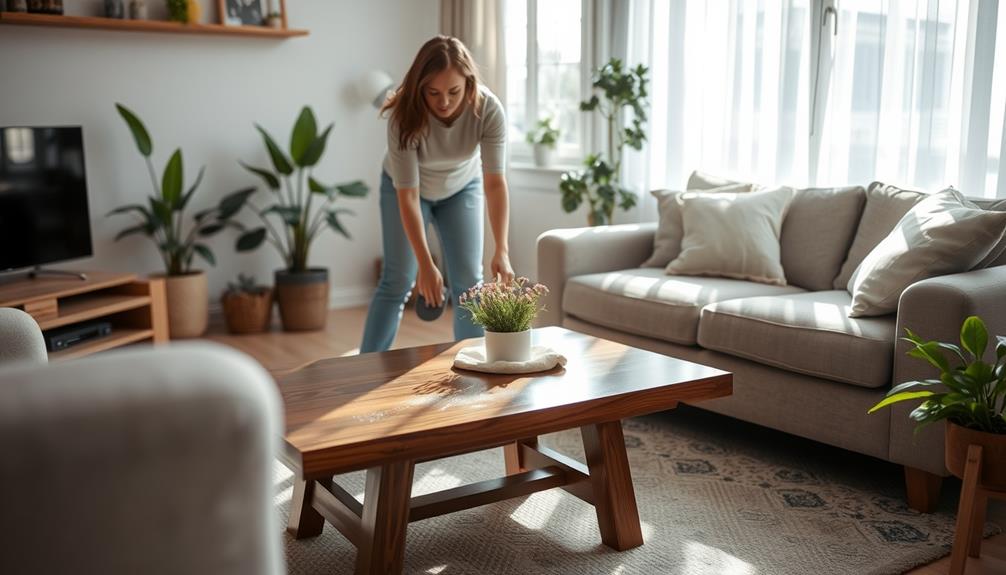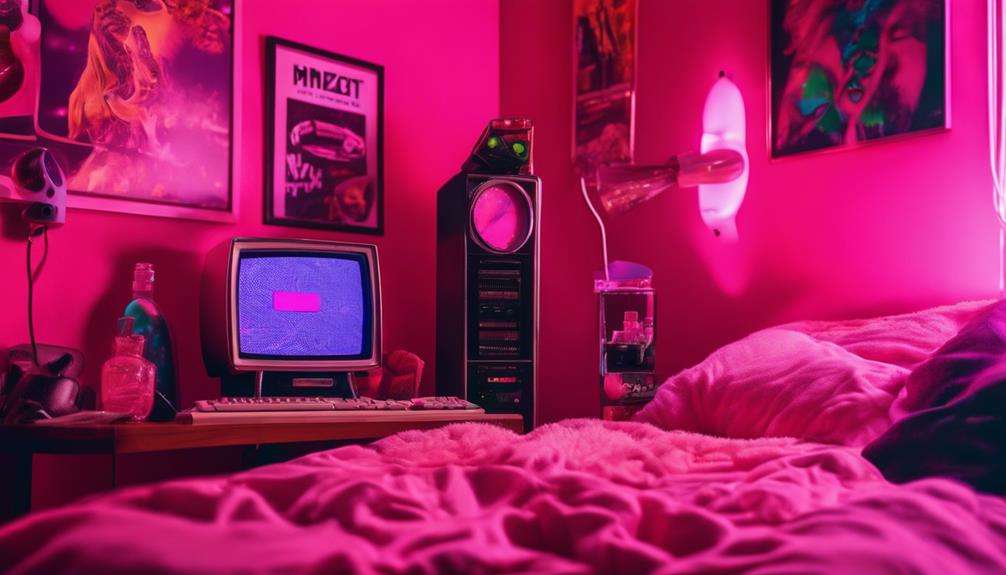To effectively clean furniture, begin by referring to the care tag for cleaning codes. If it indicates “W,” use a water-based solution with mild detergent; for “S,” choose solvent-based cleaners. Fabrics labeled “WS” can handle both, but always perform a spot test first. Materials marked “X” should only be vacuumed and lightly brushed. Consistent upkeep is crucial—vacuum every 12 to 18 months and dust leather weekly. Utilize tools like a lint brush or portable steamer for added assistance. By following these guidelines, you’ll maintain the appearance of your furniture and extend its lifespan. For tough stains, address them promptly with the appropriate cleaning solution and always remember to blot, not rub, to prevent stain spreading. Explore eco-friendly furniture disposal options such as donating, repurposing, or recycling old pieces when the time comes. Caring for your furniture not only improves its look but also minimizes the environmental impact of furniture waste.
Key Takeaways
- Identify the cleaning code on your furniture's care tag to determine the appropriate cleaning method: "W", "S", "WS", or "X".
- For "W" fabrics, use a mild water-based cleaning solution; for "S" fabrics, opt for solvent-based cleaners only.
- Regularly vacuum upholstered furniture every 12 to 18 months to prevent dirt buildup and maintain appearance.
- For leather, dust and vacuum weekly, blot spills immediately, and condition every six months to keep it supple.
- Utilize suitable cleaning tools like a Dyson vacuum for dust removal and a Bissell Little Green Machine for deep cleaning stains.
Understanding Cleaning Codes
When it comes to maintaining your furniture, understanding cleaning codes is vital. These codes, found on furniture care tags, guide you in selecting the appropriate cleaning methods to prolong the life of your items.
For instance, a "W" code indicates that water-based cleaning is suitable, allowing you to safely use water-based cleaners. On the other hand, an "S" code specifies that only solvent-based cleaners should be used to avoid damage. Just like managing a budget, being aware of these codes can help you make informed decisions that prevent unnecessary costs.
Familiarizing yourself with common financial terms can also enhance your overall understanding of value and investment.
If you see a "WS" code, it means you can utilize both cleaning methods, offering flexibility based on the type of fabric and the stain type. However, an "X" code signifies that the fabric should only be vacuumed or lightly brushed, with no cleaning agents allowed, protecting delicate materials from harm.
If you ever find a care tag missing or unclear, don't hesitate to contact the manufacturer for guidance. This step is important to prevent misuse and potential damage during cleaning.
Cleaning Different Upholstery Types

Cleaning different upholstery types requires a tailored approach based on the specific cleaning codes. For fabrics marked with a "W," you can use a water-based cleaning solution with a mild detergent. Just remember not to oversaturate the fabric to prevent damage.
If your upholstery has an "S" code, stick to a solvent-based cleaner, as water can harm the material. Additionally, it's essential to select the right tools for cleaning to enhance your results, such as using a best vacuums for dust removal in 2024 to tackle any lingering dust and allergens effectively.
For "WS" labeled upholstery, both water and solvent cleaners are acceptable. However, always conduct a spot test in a small, inconspicuous area first to verify compatibility.
If your fabric is marked with an "X," you should only vacuum or lightly brush it—avoid using any cleaning agents altogether.
When it comes to cleaning microfiber or suede, you can create a mixture of dish soap and warm water for "W" codes, or use rubbing alcohol for "S" codes. Apply the solution gently with a microfiber cloth and be sure to blot it dry afterward.
This way, you maintain the integrity of the fabric while keeping it clean and fresh.
Effective Furniture Maintenance Tips
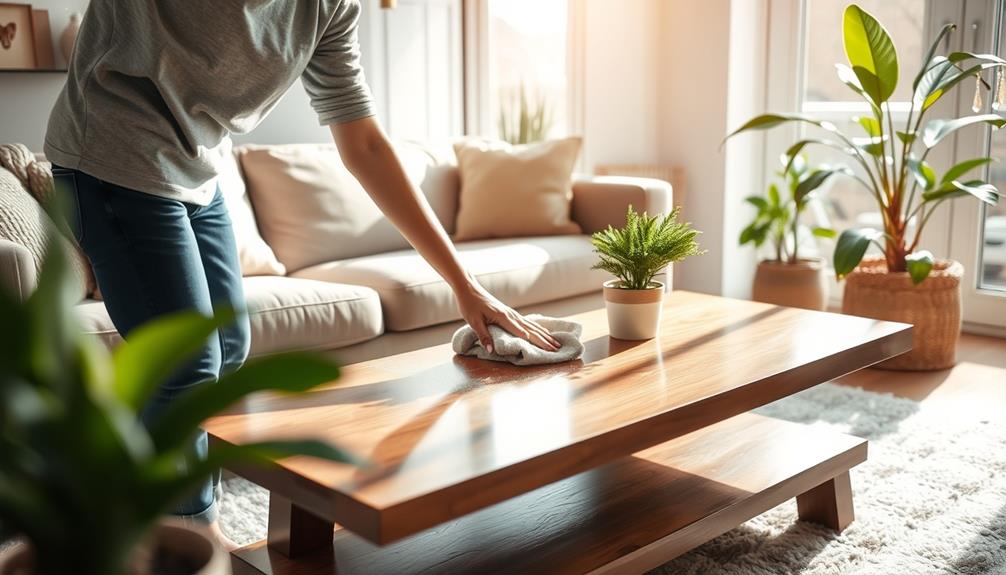
To keep your furniture looking its best, regular maintenance is key. Start by vacuuming your upholstered pieces every 12 to 18 months to prevent dirt buildup, especially if you have pets or heavy usage.
When you clean your couch, use a soft cloth and the appropriate cleaning solution based on the fabric type. For "W" code fabrics, opt for water, while "S" code fabrics require a solvent cleaning method.
Additionally, ensuring proper airflow around your furniture can prevent dust accumulation, similar to how proper airflow enhances air purifier performance as outlined in air purifier maintenance tips.
For leather furniture, dust and vacuum weekly to maintain its appearance. It's crucial to condition your leather every six months to keep it supple and prevent drying or cracking.
Additionally, applying protective products like Scotchgard can create a barrier against stains and spills, greatly extending the lifespan of absorbent fabrics.
Don't forget to fluff and rotate your cushions on a regular basis. This simple step can prevent wear patterns and help maintain comfort, ensuring that your furniture remains inviting and visually appealing.
Recommended Cleaning Products
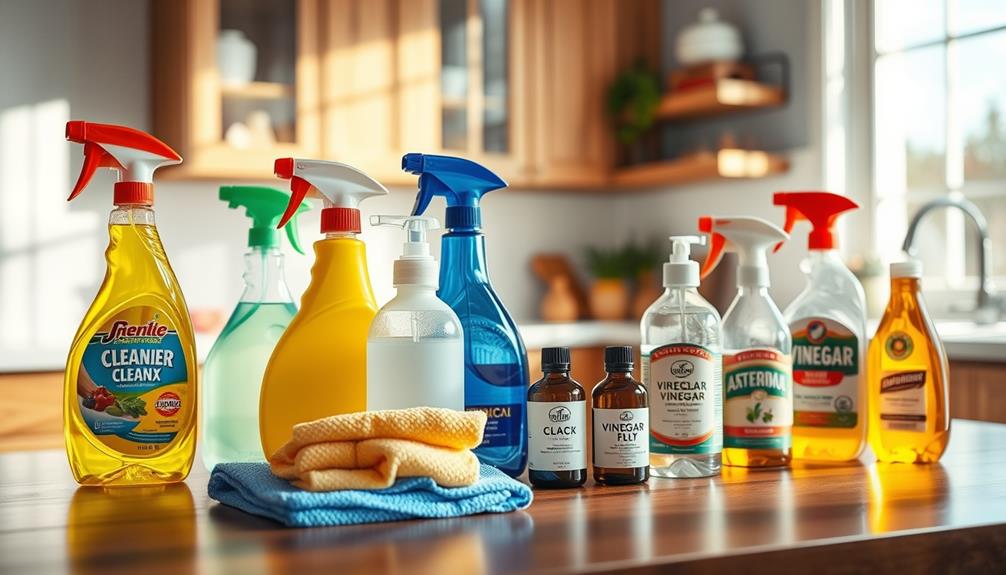
Whether you're dealing with stubborn stains or everyday dust, having the right cleaning products on hand can make all the difference in maintaining your furniture's appearance. Here's a handy list of recommended cleaning products to help you keep your furniture looking its best:
| Product | Purpose |
|---|---|
| Pet Hair and Lint Remover Brush | Quickly removes fur and lint from upholstery and clothing. |
| Chemical Guys Leather Cleaner Kit | Effectively cleans and protects leather furniture. |
| Portable Garment Steamer | Refreshes upholstery and removes wrinkles from fabric. |
For regular maintenance, consider using cleaning solutions made from vinegar and baking soda. They tackle various cleaning challenges without harsh chemicals. Don't forget to protect your fabric with products like Scotchgard to prevent stains from setting. When cleaning, always use clean water and a clean rag for the best results. Regular vacuuming is also essential; it helps remove dirt and debris, keeping your furniture in great shape. With these maintenance products, you'll guarantee your furniture remains stunning for years to come!
Specialized Care for Leather
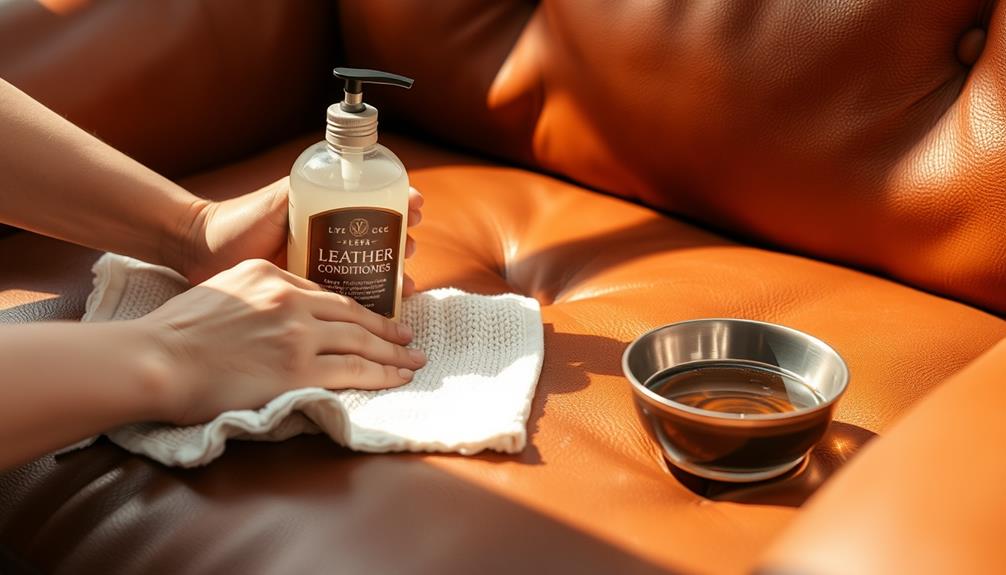
Leather furniture adds elegance to any space, but it requires specialized care to keep it looking its best. To guarantee your leather couch stays in top condition, follow these essential steps:
- Regular Maintenance: Dust and vacuum your leather furniture regularly using a soft brush attachment. This helps prevent buildup and keeps the surface looking fresh.
- Immediate Spill Response: If a spill occurs, quickly blot it with a clean, dry cloth. This can prevent stains and damage to the leather surface.
- Cleaning and Conditioning: For cleaning, use a diluted soap solution or a mixture of equal parts vinegar and water. Always pre-test this solution on a hidden area first.
Every six months, condition leather with a mix of one part vinegar and two parts flaxseed oil to maintain suppleness and prevent cracking.
Additionally, avoid placing your leather furniture in direct sunlight or near heat sources to prevent fading and drying out.
Tools for Efficient Cleaning
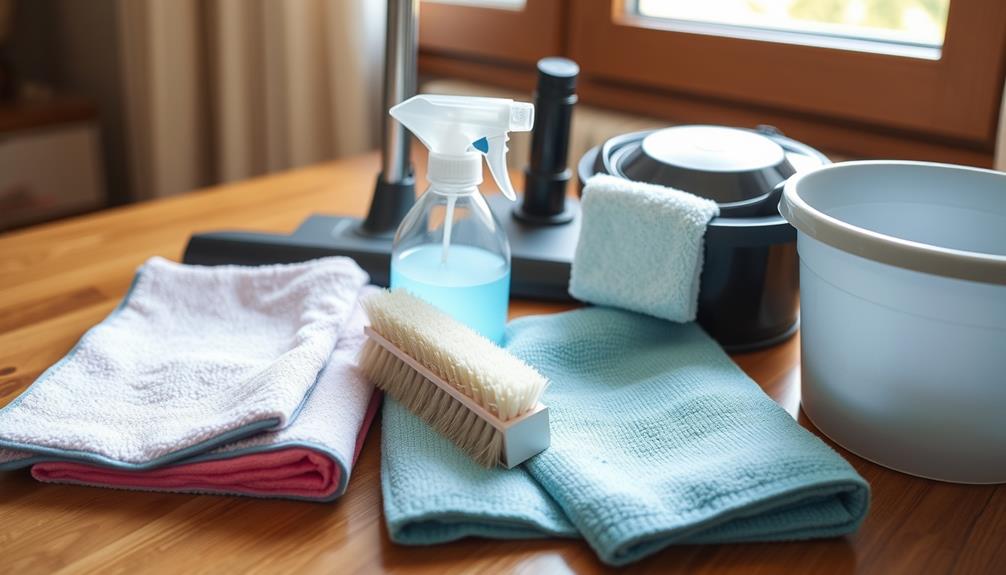
Having the right tools makes cleaning furniture much easier and more effective. A Dyson vacuum is vital for quickly removing dust and crumbs from various surfaces, guaranteeing your furniture always looks tidy.
For tougher messes, the Bissell Little Green Machine is perfect for deep cleaning and stain removal on upholstered furniture.
To tackle pet hair and dust without any fuss, keep a lint brush handy. It's a simple, battery-free solution that works wonders on furniture, clothing, and rugs.
Maintaining the appearance of your upholstery is also significant; a fabric shaver can help you remove pilling and fuzz, keeping your fabrics smooth and fresh.
To protect your furniture from future stains, consider using Scotchgard. This protective spray repels liquids and prevents stains from setting into absorbent fabrics, extending the life of your pieces.
Always check the care instructions for your specific fabrics to verify you're using the right products. If the cleaning task feels overwhelming, don't hesitate to have your upholstered furniture professionally cleaned to restore its original beauty.
With these tools, you'll be well-equipped to keep your furniture in top shape!
Frequently Asked Questions
What Is the Best Thing to Clean Furniture With?
To clean your furniture effectively, use a gentle detergent mixed with water for fabric, and equal parts water and vinegar for leather. Always opt for microfiber cloths to avoid scratches and maintain the surface's integrity.
What Is the Best Way to Clean a Fabric Sofa?
To clean your fabric sofa, identify the fabric type using the care tag, vacuum thoroughly, and apply the appropriate cleaning solution. Always spot test first, and consider professional cleaning every year or so for best results.
How Do You Clean Really Dirty Furniture?
If you're dealing with really dirty furniture, start by vacuuming thoroughly. Then, use an appropriate cleaning solution based on the fabric type, and tackle any stains with a targeted approach for the best results.
How to Deep Clean a Sofa at Home?
Think of your sofa as a hidden treasure, waiting to shine. Start deep cleaning by vacuuming thoroughly, identifying the fabric code, and using the right cleaning method. You'll revive its beauty with care and attention.
Conclusion
To sum up, keeping your furniture fabulous doesn't have to be a hassle. With the right routine and reliable resources, you can maintain your pieces in pristine condition. Remember to respect cleaning codes, provide proper care for different materials, and use effective tools. By committing to consistent care, your furniture will remain a source of pride and comfort in your home. So, let's leap into lasting luster and enjoy a beautifully maintained space together!
